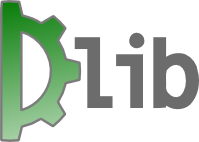Related Research Articles
Knowledge representation and reasoning is the field of artificial intelligence (AI) dedicated to representing information about the world in a form that a computer system can utilize to solve complex tasks such as diagnosing a medical condition or having a dialog in a natural language. Knowledge representation incorporates findings from psychology about how humans solve problems and represent knowledge in order to design formalisms that will make complex systems easier to design and build. Knowledge representation and reasoning also incorporates findings from logic to automate various kinds of reasoning, such as the application of rules or the relations of sets and subsets.
The Semantic Web is an extension of the World Wide Web through standards set by the World Wide Web Consortium (W3C). The goal of the Semantic Web is to make Internet data machine-readable.
The expression computational intelligence (CI) usually refers to the ability of a computer to learn a specific task from data or experimental observation. Even though it is commonly considered a synonym of soft computing, there is still no commonly accepted definition of computational intelligence.
Claytronics is an abstract future concept that combines nanoscale robotics and computer science to create individual nanometer-scale computers called claytronic atoms, or catoms, which can interact with each other to form tangible 3D objects that a user can interact with. This idea is more broadly referred to as programmable matter. Claytronics has the potential to greatly affect many areas of daily life, such as telecommunication, human-computer interfaces, and entertainment.
In artificial intelligence research, commonsense knowledge consists of facts about the everyday world, such as "Lemons are sour", that all humans are expected to know. It is currently an unsolved problem in Artificial General Intelligence and is a focus of the Allen Institute for Artificial Intelligence. The first AI program to address common sense knowledge was Advice Taker in 1959 by John McCarthy.
In artificial intelligence, a fluent is a condition that can change over time. In logical approaches to reasoning about actions, fluents can be represented in first-order logic by predicates having an argument that depends on time. For example, the condition “the box is on the table”, if it can change over time, cannot be represented by ; a third argument is necessary to the predicate to specify the time: means that the box is on the table at time . This representation of fluents is modified in the situation calculus by using the sequence of the past actions in place of the current time.
Gregory Dudek is a chaired professor of computer science at McGill University, was the Director of the McGill Center for Intelligent Machines from 2004 to 2007, and was the Director of the McGill University School of Computer Science from 2008 to 2016. He served as the Scientific Director of the NSERC Canadian Field Robotics Network from 2012 to 2018. He became Scientific Director and Lead Investigatior or it ssuccessor the NSERC Canadian Robotics Network. In 2018, Samsung announced that he would become a VP Research and Lead their new Samsung AI Center in Montreal (SAIC-Montreal). Th is the son of poet Louis Dudek, he was made a Dawson Scholar of that university and subsequently James McGill Chair (∈), and directs the mobile robotics laboratory there. He has written over 300 refereed articles on computer vision and robotics, and is co-author of the book Computational Principles of Mobile Robotics which is used to teach robotics at a number of universities [1].
In machine learning, systems which employ offline learning do not change their approximation of the target function when the initial training phase has been completed. These systems are also typically examples of eager learning.

OpenCog is a project that aims to build an open source artificial intelligence framework. OpenCog Prime is an architecture for robot and virtual embodied cognition that defines a set of interacting components designed to give rise to human-equivalent artificial general intelligence (AGI) as an emergent phenomenon of the whole system. OpenCog Prime's design is primarily the work of Ben Goertzel while the OpenCog framework is intended as a generic framework for broad-based AGI research. Research utilizing OpenCog has been published in journals and presented at conferences and workshops including the annual Conference on Artificial General Intelligence. OpenCog is released under the terms of the GNU Affero General Public License.
Probabilistic programming (PP) is a programming paradigm in which probabilistic models are specified and inference for these models is performed automatically. It represents an attempt to unify probabilistic modeling and traditional general purpose programming in order to make the former easier and more widely applicable. It can be used to create systems that help make decisions in the face of uncertainty.
In information technology a reasoning system is a software system that generates conclusions from available knowledge using logical techniques such as deduction and induction. Reasoning systems play an important role in the implementation of artificial intelligence and knowledge-based systems.

Dlib is a general purpose cross-platform software library written in the programming language C++. Its design is heavily influenced by ideas from design by contract and component-based software engineering. Thus it is, first and foremost, a set of independent software components. It is open-source software released under a Boost Software License.
Automatic taxonomy construction (ATC) is the use of software programs to generate taxonomical classifications from a body of texts called a corpus. ATC is a branch of natural language processing, which in turn is a branch of artificial intelligence.
Semantic queries allow for queries and analytics of associative and contextual nature. Semantic queries enable the retrieval of both explicitly and implicitly derived information based on syntactic, semantic and structural information contained in data. They are designed to deliver precise results or to answer more fuzzy and wide open questions through pattern matching and digital reasoning.
This glossary of artificial intelligence is a list of definitions of terms and concepts relevant to the study of artificial intelligence, its sub-disciplines, and related fields. Related glossaries include Glossary of computer science, Glossary of robotics, and Glossary of machine vision.
KnowRob is a system which combines knowledge representation and reasoning methods to acquire and ground knowledge. This system is the backbone of openEASE. both under developing at the Institute for Artificial Intelligence at the University of Bremen, Germany.

Aude G. Billard is a Swiss physicist and pioneer in the fields of machine learning and human-robot interactions. As a full professor at the School of Engineering at Swiss Federal Institute of Technology in Lausanne (EPFL), Billard’s research focuses on applying machine learning to support robot learning through human guidance. Billard’s work on human-robot interactions has been recognized numerous times by the Institute of Electrical and Electronics Engineers (IEEE) and she holds currently holds a leadership position on the executive committee of the IEEE Robotics and Automation Society (RAS) as the vice president of publication activities.

Margarita Chli is an Assistant Professor and leader of the Vision for Robotics Lab at ETH Zürich in Switzerland. Chli is a leader in the field of computer vision and robotics and was on the team of researchers to develop the first fully autonomous helicopter with onboard localization and mapping. Chli is also the Vice Director of the Institute of Robotics and Intelligent Systems and an Honorary Fellow of the University of Edinburgh in the United Kingdom. Her research currently focuses on developing visual perception and intelligence in flying autonomous robotic systems.

In knowledge representation and reasoning, knowledge graph is a knowledge base that uses a graph-structured data model or topology to integrate data. Knowledge graphs are often used to store interlinked descriptions of entities – objects, events, situations or abstract concepts – with free-form semantics.
A continuum robot is a type of robot that is characterised by infinite degrees of freedom and number of joints. These characteristics allow continuum manipulators to adjust and modify their shape at any point along their length, granting them the possibility to work in confined spaces and complex environments where standard rigid-link robots cannot operate. In particular, we can define a continuum robot as an actuatable structure whose constitutive material forms curves with continuous tangent vectors. This is a fundamental definition that allows to distinguish between continuum robots and snake-arm robots or hyper-redundant manipulators: the presence of rigid links and joints allows them to only approximately perform curves with continuous tangent vectors.
References
- ↑ Nyga, Daniel (2017). "Interpretation of Natural-language Robot Instructions: Probabilistic Knowledge Representation, Learning, and Reasoning" (PDF). PHD Thesis.
- ↑ Nyga, Daniel; Beetz, Michael (2012). "Everything robots always wanted to know about housework (But were afraid to ask)". 2012 IEEE/RSJ International Conference on Intelligent Robots and Systems. pp. 243–250. CiteSeerX 10.1.1.708.7035 . doi:10.1109/IROS.2012.6385923. ISBN 978-1-4673-1736-8.
- ↑ Nyga, Daniel; Beetz, Michael (2015). "Cloud-based Probabilistic Knowledge Services for Instruction Interpretation" (PDF). International Symposium of Robotics Research (ISRR).
- ↑ Nyga, Daniel; Picklum, Mareike; Koralewski, Sebastian; Beetz, Michael (2017). "Instruction Completion through Instance-based Learning and Semantic Analogical Reasoning". International Conference on Robotics and Automation (ICRA).
- ↑ Lisca, Gheorghe; Nyga, Daniel; Balint-Benczedi, Ferenc; Langer, Hagen; Beetz, Michael (2015). "Towards robots conducting chemical experiments". 2015 IEEE/RSJ International Conference on Intelligent Robots and Systems (IROS). pp. 5202–5208. doi:10.1109/IROS.2015.7354110. ISBN 978-1-4799-9994-1.
- ↑ Will Knight (August 24, 2015). "Robots Learn to Make Pancakes from WikiHow Articles". MIT Tech Review . Retrieved 2017-03-14.
A robot called PR2 in Germany is learning to prepare pancakes and pizzas by carefully reading through WikiHow’s written directions.